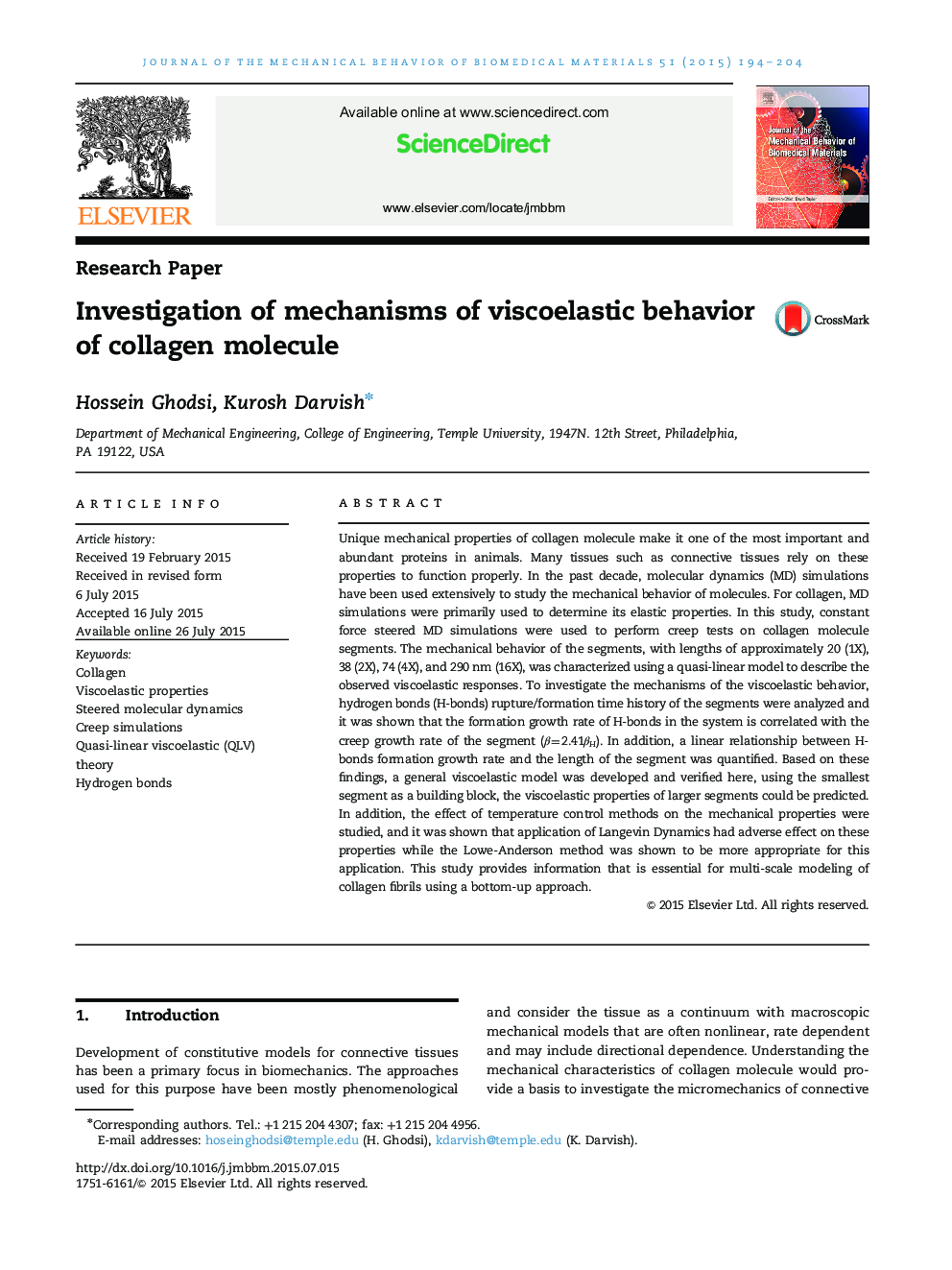| کد مقاله | کد نشریه | سال انتشار | مقاله انگلیسی | نسخه تمام متن |
|---|---|---|---|---|
| 810557 | 1469094 | 2015 | 11 صفحه PDF | دانلود رایگان |
• Steered molecular dynamics (SMD) simulations were performed on collagen segments.
• A QLV viscoelastic model was used to model the creep behavior.
• Hydrogen bonds rupture/formation mechanisms of the systems were investigated.
• Based on the hydrogen bonds mechanisms a constitutive model for creep was developed.
• Different temperature control algorithms in SMD simulations were investigated.
Unique mechanical properties of collagen molecule make it one of the most important and abundant proteins in animals. Many tissues such as connective tissues rely on these properties to function properly. In the past decade, molecular dynamics (MD) simulations have been used extensively to study the mechanical behavior of molecules. For collagen, MD simulations were primarily used to determine its elastic properties. In this study, constant force steered MD simulations were used to perform creep tests on collagen molecule segments. The mechanical behavior of the segments, with lengths of approximately 20 (1X), 38 (2X), 74 (4X), and 290 nm (16X), was characterized using a quasi-linear model to describe the observed viscoelastic responses. To investigate the mechanisms of the viscoelastic behavior, hydrogen bonds (H-bonds) rupture/formation time history of the segments were analyzed and it was shown that the formation growth rate of H-bonds in the system is correlated with the creep growth rate of the segment (β=2.41βH). In addition, a linear relationship between H-bonds formation growth rate and the length of the segment was quantified. Based on these findings, a general viscoelastic model was developed and verified here, using the smallest segment as a building block, the viscoelastic properties of larger segments could be predicted. In addition, the effect of temperature control methods on the mechanical properties were studied, and it was shown that application of Langevin Dynamics had adverse effect on these properties while the Lowe-Anderson method was shown to be more appropriate for this application. This study provides information that is essential for multi-scale modeling of collagen fibrils using a bottom-up approach.
Journal: Journal of the Mechanical Behavior of Biomedical Materials - Volume 51, November 2015, Pages 194–204
